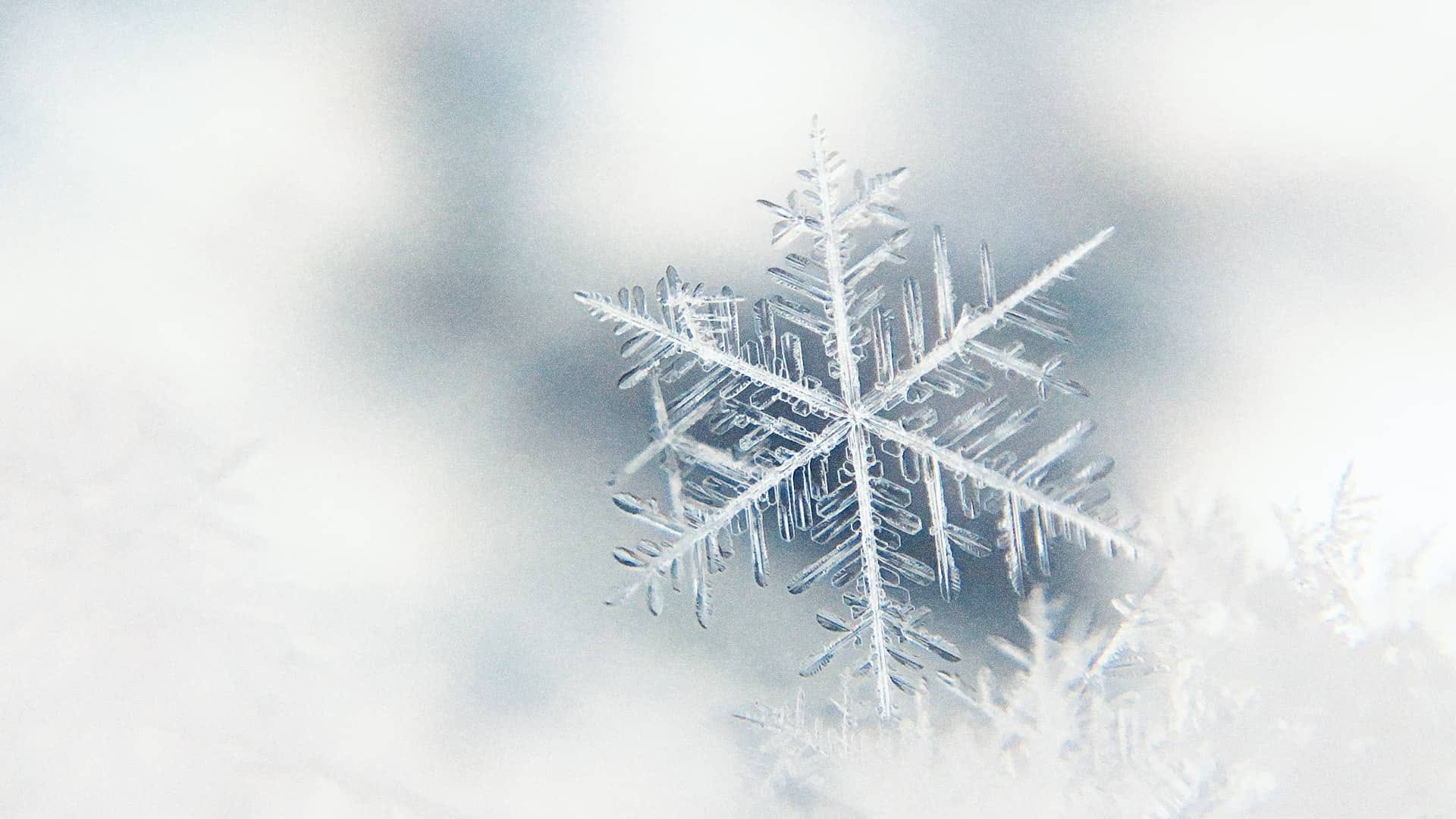
Hello. Perhaps it’s snowing where you are, and you’re seeing what I’m seeing. Or else imagine it: Outside your window, the air is filled with magnificent little snowflakes. They’re dancing—there’s wind. In the movements of so countlessly many things that cannot resist it, its shape is revealed. Waves and ribbons and spirals of air dotted with tiny white pellets, forming in one location and dissolving in another—you can see all of the wind. It’s brighter out, undoubtedly quieter, too. It’s perfect.
I remember the first snow of every winter I’ve run through. They weren’t always terribly memorable, and I wouldn’t be able to recall them in the detail that I do were it not for the fact that running tends to increase my capacity for committing the unremarkable to memory—I always run in the first snow of the year.
Sometimes, I get the winter wonderland. Last year, the magic clouds moved in during the night, and the snow kept falling well into the light hours. Plump, juicy snowflakes, tumbling down sluggishly, as if weary, or satiated. I got to spend that Saturday morning on my favorite nearby trail, among oak and elm trees, in pristine, fluffy snow and the kind of otherworldly quiet that seeps through your skin and spreads throughout your body, making you feel as though you are of the stillness, as well.
And then other times, I get the slushy mess. We had our first snowfall of the year a few weeks ago, and it was nothing like the fairytale of 2022 or the one currently framed in my window. What fell from the sky instead were these translucent, ashen weaklings that could barely reach the ground before expiring. It still counted, however, so I bundled up and headed out to welcome our winter. As it was a weekday, I ran in the city, through a slippery mixture of grime from the streets and gelid meltwater, with the thinnest white dusting on top. And yes, I slipped and fell in the mess—twice. I had to plead my way back into the house.
Of course, this was far from the first time I’d come home (as an adult) looking like I’d been splashing through mud. Or after literally splashing through mud. Getting dirty comes with the sport, much like adopting the sleep-wake cycle of a chicken and throwing out your skinny jeans because you can’t pull them over your calves anymore.
Sometimes—most times?—running is messy. This has never stopped me from enjoying it. In fact, I can think of numerous occasions when the messiness has only doubled my joy (just one of the many ways I’m nothing like Marie Kondo). But, while I’ve always been okay with it, it’s only recently that I’ve begun to realize that messiness extends far beyond soiled calf-accommodating running wear.
For it’s not just the physical act of running that’s messy. The whole sport and the way we do it is kind of chaotic. Training, for example, with its many aspects and demands. And races, with their logistics. And our finances, our closet, all the gear and gadgets that are all operated differently, and sleep, and food, and our relationship with all of it. Running is riddled with compromises, guesswork, fuss, and clutter. And so much happens that’s fundamentally unpredictable. So many butterflies are flapping their wings in so many parts of the world.
A bit of a bummer, that. Even if we set ourselves up perfectly for a desired outcome, we’d never have complete control over what happens. We run and live in a perpetual state of uncertainty, mitigated, yes, but hardly eliminated by our hypothetical perfect preparation. We can design and plan and build as carefully as we want—we’d still be building a house of cards. It gets worse. “Focus on the process, not the result,” they say. Okay, let’s: The process is precisely where all the messiness lives.
But then it gets better, just give me a second to do the thing:
A Reading Recommendation in a Single Quotation with No Further Explanation
❝The Butterfly Effect was no accident; it was necessary.
—James Gleick, Chaos: Making a New Science
So, the good news is, it’s not running that’s messy. It’s us, we make the mess. We are a messy species. This actually isn’t news at all, but it is good.
You see, there’s never been any other way. Messiness is our thing—certainly more than perfection is. And not only can we handle it, but we can and have been using it to our advantage. All throughout our lives, we’ve been overcoming obstacles and finding motivation, grace, and joy in the imperfect. Our “dirty” secret has been our secret weapon: Because of it, we’re agile, we’re resourceful, we’re resilient. All this time, while seeking order, we’ve been thriving in chaos.
And running—running is merely illustrative of that.
Bonus good news (still not really news): As famous mathematician Benoit Mandelbrot argued, a degree of order could exist even in things that initially appear messy or chaotic. The “father of fractals” would know. Incidentally, if you’re interested in a tangential observation comparing running to a piece of geometry that likewise can cause dizziness, do I have a lengthy sidenote for you!1
☆ ✭ ★
Ours is not the fate of the snowflakes, nor is theirs an enviable fate.
It’s still snowing outside, and the breezes have not yet tired of chasing the snowflakes in seemingly every direction. I can see all of the wind, and now that’s all I’m seeing: An aimless, erratic force, invisible save for the movements of that which cannot resist it, disturbing the delicate ice crystals’ fall. Perfection seems ephemeral, fragile, and more foreign than ever. I think I’ll leave it to the snowflakes.
Thanks for reading. If you enjoyed your time here, please share “Look at This Mess” or this newsletter with a friend. Then make some cocoa if you haven’t recently.
If the name Mandelbrot evokes in your mind images of psychedelic art/the swirling vortices of cosmic madness, it’s because he’s the guy after whom this thing is named:

Without getting too much into the fractal weeds, one of the fundamental characteristics of the Mandelbrot set is its self-similarity: the property of an object or a pattern to appear similar to itself at different scales or levels of magnification. This property can be found outside of mathematics, as well, albeit in a less strict (i.e., “statistical”) sense. Some examples include clouds, mountains, coastlines, tree branches, fern leaves, blood vessels, and—you guessed it—snowflakes.
Given the repetitive nature of skill development and physical conditioning, and the cyclical process of training and recovery, it could be said that running also exhibits some aspects of self-similarity. From form drills through intervals and hill repeats to training periodization, the iterative application of simple rules produces a fascinatingly complex structure. Isn’t that neat?





This is a beautifully written piece. The analogy between the chaotic dance of snowflakes and the unpredictable nature of running is spot on. It's so easy to get caught up in chasing that "perfect run" or the perfect training plan when simplicity and resilience are what truly get us across the finish line - both in running and in life.
Here's to embracing the chaos!
P.S. love the Mandelbrot reference, learned something new (: